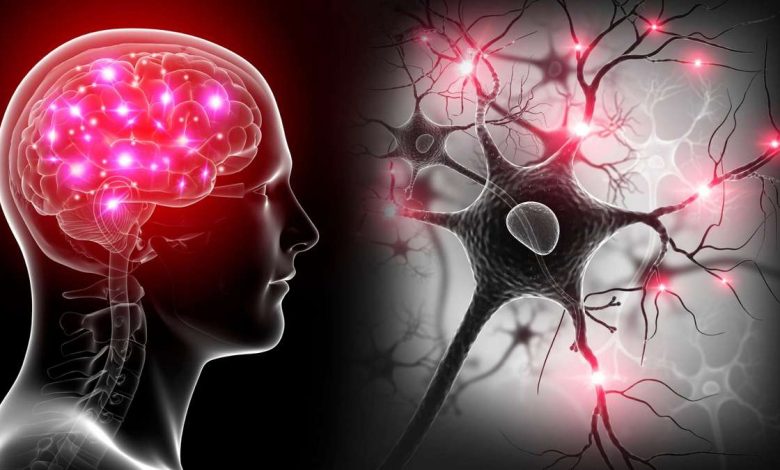Focal neurological symptoms (focal neurological deficit): What's it, causes, symptoms, diagnostics, treatment, prevention

Focal neurologic deficits; Neurological deficits – focal
What is focal neurological deficit?
Focal neurological deficit (focal neurological symptoms) is a dysfunction of the nerves, spinal cord or brain. It hits a certain place, eg, left side of the face, right hand or even a small area, e.g. language. Problems with speech, vision and hearing are also considered focal neurological disorders.
Type, the location and severity of the problem can indicate, what area of the brain or nervous system is affected.
Opposite, a non-focal problem is NOT specific to a particular area of the brain. A non-focal problem may include loss of consciousness or an emotional problem.
A focal neurological problem can affect any of the following functions:
- Changes in motor activity, including paralysis, weakness, loss of muscle control, increased muscle tone, loss of muscle tone or movement, which a person cannot control (involuntary movements, such as tremor)
- Sensitivity changes, including paresthesias (abnormal sensations), numbness or decreased sensation.
Other examples of focal neurological symptoms include:
- Horner's syndrome: small pupil on one side, unilateral drooping eyelid, lack of sweating on one side of the face and drooping of one eye into the socket.
- Lack of interest in other people
- Loss of coordination or loss of fine motor control (ability to perform complex movements)
- Weak gag reflex, difficulty swallowing and frequent choking.
- Speech or language difficulties, such as aphasia (trouble understanding or pronouncing words) or dysarthria (problem with pronunciation of words), bad diction, poor speech understanding, writing difficulties, inability to read or understand what is written, inability to name things (anomie)
- Changes in vision, such as decreased vision, reduced field of view , sudden loss of vision , double vision (diplopia)
Causes of focal neurological symptoms
Focal neurological deficits are caused by damage to a specific area of the brain. Everything, that damages or destroys any part of the nervous system, can cause focal neurological deficit. Examples include:
- abnormal blood vessels (vascular malformation)
- Encephaloma
- Cerebral Palsy
- Degenerative nerve disease (eg, multiple sclerosis)
- Diseases of one nerve or group of nerves (eg, carpal tunnel syndrome )
- Brain infection (eg, meningitis or encephalitis)
- Early
- Stroke
In some cases, focal neurological deficits may occur without any underlying cause..
Symptoms of focal neurological symptoms
Symptoms, associated with focal neurological deficits, depend on the affected area of the brain. Common symptoms include visual disturbances, weakness on one side or in one specific area of the body, changes in speech or other language abilities, personality changes, problems with coordination and balance, as well as memory problems.
When to see a doctor
If you or your loved one is experiencing any of the symptoms, associated with focal neurological deficits, it is important to see a doctor immediately. Delays in diagnosis or treatment can lead to worsening symptoms and even disability. It is also important to note, that some of these symptoms may indicate a more serious condition, such as a stroke or brain tumor, and should be assessed accordingly.
Questions, that your doctor may ask
When visiting a doctor for symptoms, associated with focal neurological deficits, the doctor may ask a series of questions about your medical history and symptoms, which you are experiencing. Common questions include:
- When did you first notice the symptoms?
- Symptoms get worse?
- Are you experiencing other symptoms, like a headache, nausea or dizziness?
- Have you had a recent head injury or illness?
- Are there any other diseases, for which you are being treated?
Diagnosis of focal neurological symptoms
Diagnosis of focal neurologic deficits usually includes history and physical examination.. Neurological tests to check reflexes may also be done., muscle strength, vision and hearing, as well as coordination. Imaging Tests, such as MRI and CT, may also be prescribed to detect brain abnormalities.
Treatment of focal neurological symptoms
Treatment of focal neurological deficits largely depends on the underlying cause and the severity of the symptoms.. In cases, when symptoms are mild and reversible, treatment may include lifestyle changes, physical therapy and medications to relieve symptoms. In more serious cases, further treatment may include surgery to remove the tumors., blood clots, abscesses or other causes of disorders.
Home treatment of focal neurological symptoms
For those, who experience focal neurological deficits, there are a number of home treatments, which can help relieve symptoms and improve overall functioning. This may include:
- Get plenty of rest and avoid strenuous activities.
- Balanced diet and drinking plenty of fluids.
- Exercise regularly, but at the level, appropriate for your condition.
- Applying Stress Management Techniques, such as mindfulness and deep breathing.
- Use of assistive devices, such as canes or walkers, to improve mobility.
Prevention of focal neurological symptoms
The best way to prevent focal neurological deficits is to take steps to reduce the risk of stroke and other conditions, causing brain damage. This includes regular exercise, healthy eating, quitting smoking and excessive alcohol consumption, as well as control of such states, like high blood pressure and diabetes. If you have had a stroke or head injury, it is important to follow the doctor's instructions and take all prescribed medications.
Used sources and literature
Deluca GC, Griggs RC. Approach to the patient with neurologic disease. In: Goldman L, Schafer AI, eds. Goldman-Cecil Medicine. 26th ed. Philadelphia, PA: Elsevier; 2020:chap 368.
Jankovic J, Mazziotta JC, Newman NJ, Pomeroy SL. Diagnosis of neurological disease. In: Jankovic J, Mazziotta JC, Pomeroy SL, Newman NJ, eds. Bradley and Daroff’s Neurology in Clinical Practice. 8th ed. Philadelphia, PA: Elsevier; 2022:chap 1.
